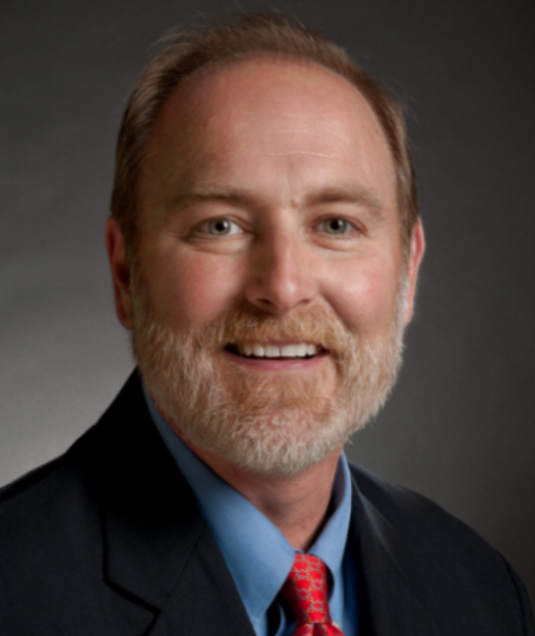Miami, FL: Art in Science | Can scientific photos be art?

Sponsored by the Affinity Program Music, Art, & Medicine Series, Hopkins Miami, and Young Alumni Programs
Art is defined by Websters as "the expression or application of human creative skill and imagination, typically in a visual form such as painting or sculpture, producing works to be appreciated primarily for their beauty or emotional power." But as you gaze at an image of the moons of Jupiter or the illumination of a cancer cell through an electron microscope, can't you feel the power of these images? Join us for a conversation with Dr. Norman Barker, Professor of Pathology and Art as Applied to Medicine, and Dr. Denis Wirtz, Vice Provost for Research, as we explore scientific imagery as works of art.
Did you know that photography was invented by a scientist and an artist? Early on in this invention process it was the scientists who realized the importance of this new and novel process to document and to elucidate their scientific activities. The idea of having objects draw themselves on a plate with-out the aid of an artist hand is a concept that is foreign to us now but that’s exactly how one of the early inventors, William Henry Fox Talbot described his Calotype process. Scientific photography– especially microscopic subjects, are very rarely held with the artistic respect as other areas of “Fine Art Photography”. This is because the subject matter often seems alien to most and therefore the viewer lacks a common visual reference. For the individuals who have scientific training, these images are often appreciated with wonder and awe. If it’s the aim of the fine arts to give insight or inspiration, then the scientific image is worthy of consideration as an artistic medium.
Registration includes the brunch buffet at Life House Restaurant, two Mimosas, and a 1-day pass to Art Basel.
Norm Barker will guide us in an exploration of scientific imagery over brunch. Then tour Art Basel together and draw parallels between what you see in the exhibition hall and what you've learned over brunch!
Speakers:
 |
Norm Barker MS, MA, RBP, FRPS is a Professor of Pathology and Art as Applied to Medicine at the Johns Hopkins University, School of Medicine. He is Director of Pathology Photography and Graphics Laboratory at Johns Hopkins School of Medicine. A graduate of The Maryland Institute College of Art, he also holds a M.S. from Johns Hopkins University in education as well as a M.A. from The University of Baltimore in publications design. He specializes in photomicroscopy and macro photography. He is an Accredited Senior Imaging Scientist as well as a Fellow of The Royal Photographic Society in Great Britain and the Biocommunications Association. Norm’s work lies at the interface between art and science. He is an award winning photographer, writer and designer. His work appears in textbooks, journals and museums worldwide. His photographs are in the permanent collections of more than forty museums including The Smithsonian Museum of Natural History, The George Eastman Museum, The American Museum of Natural History, The Nelson-Atkins Museum and The Science Museum in London. He has published 6 books and numerous scientific articles. His latest book collaboration “Hidden Beauty: Exploring The Aesthetics of Medical Science” shows the beauty of medicine and the human body and is on a museum tour from 2014-2020. |
 |
Denis Wirtz Vice Provost for Research and T.H. Smoot Professor, has been a Johns Hopkins faculty member since 1994. Dr. Denis Wirtz studies the biophysical properties of healthy and diseased cells, including interactions between adjacent cells and the role of cellular architecture on nuclear shape and gene expression. Cell biophysics, single molecule manipulation, intracellular particle trafficking, instrument development, tissue engineering, and nanotechnology in biology and medicine are among his research interests. Dr. Wirtz directs the Johns Hopkins Physical Sciences-Oncology Center and co-directs the Cancer Nanotechnology Training Center, both National Cancer Institute-funded entities. He is a co-founder and former associate director of the Johns Hopkins Institute for NanoBioTechnology (INBT). He holds the T.H. Smoot Professorship in the Whiting School of Engineering with secondary appointments in the School of Medicine. He has authored more than 200 peer-reviewed articles, and his research has been cited more than 16,000 times. In his role as vice provost for research, Dr. Wirtz focuses on the current and future health of the university’s research enterprise, including institutional research compliance, undergraduate research support, research administration and development, and cross-divisional research initiatives, such as the Bloomberg Distinguished Professorships, the Johns Hopkins Catalyst and Discovery Awards, and the President’s Frontier Awards. |
